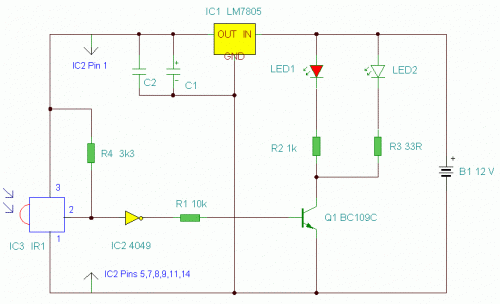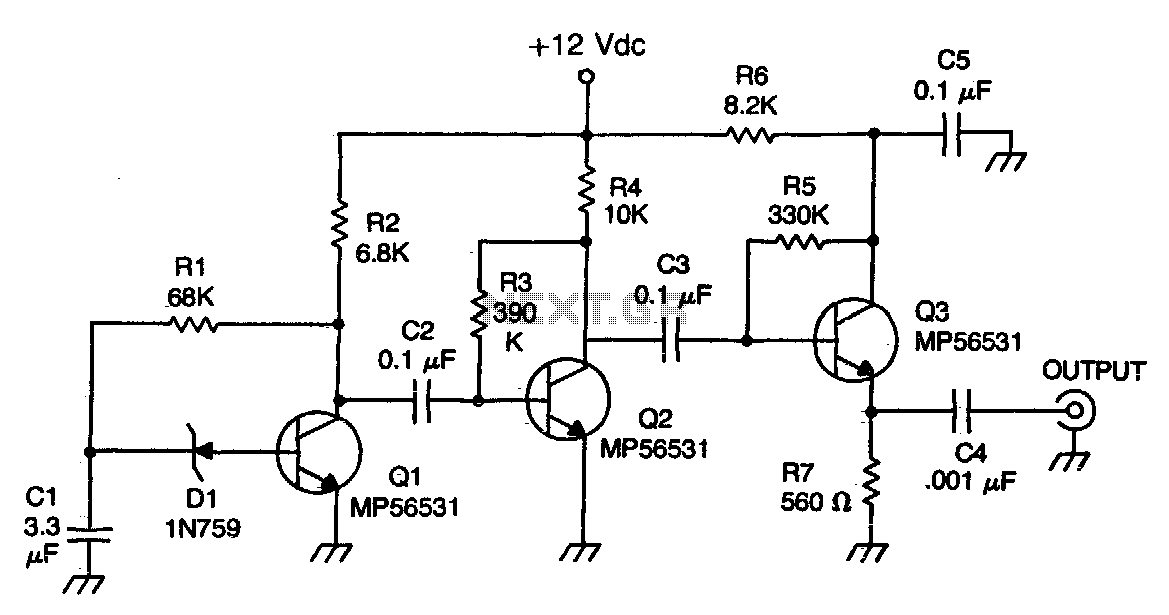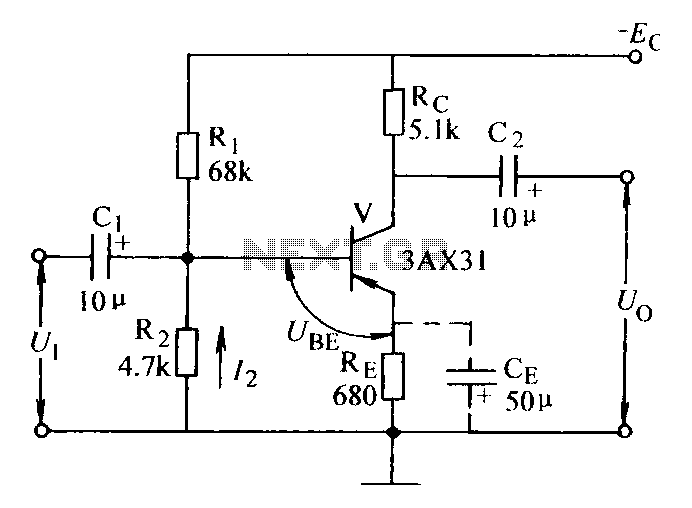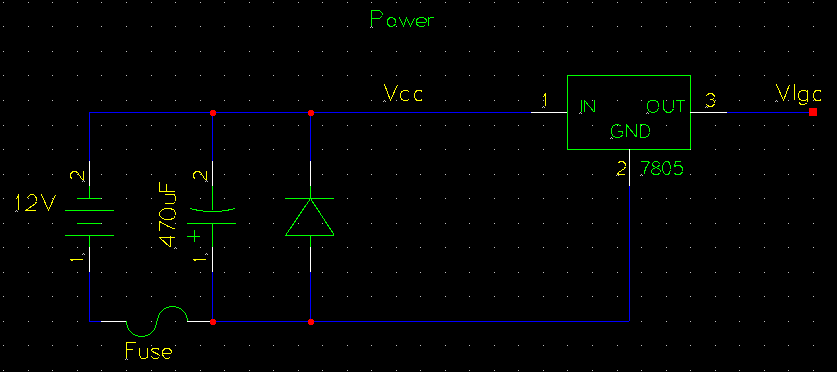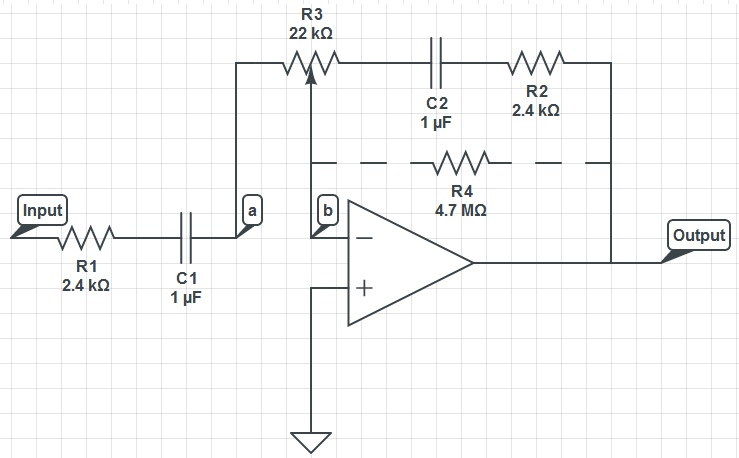
16 Step Analog Sequencer circuit
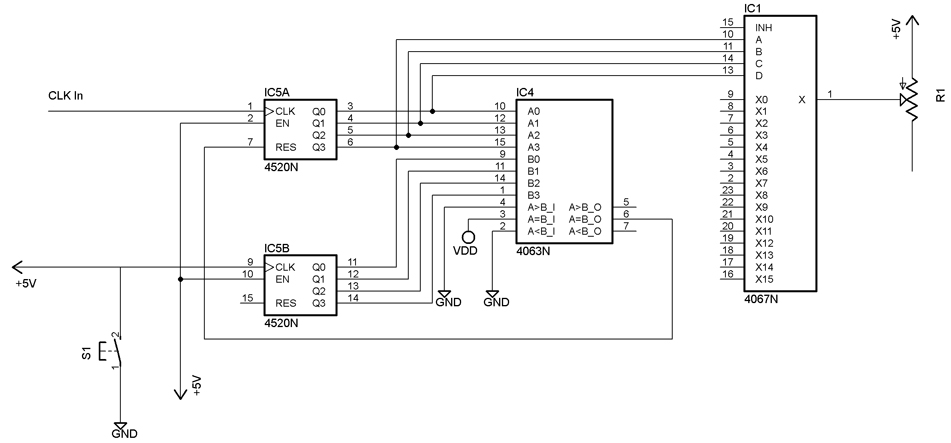
The following video showcases a test circuit of a 16-step analog sequencer based on Mauno Tuominen's schematic for an analog CMOS sequencer utilizing a 4067N multiplexer/demultiplexer. A DIY version of the sequencer can be found at studiomanus.com. An old SN76477 was repurposed for this project, starting with basic components such as indicator lights, tempo control, and a simple oscillator. The ultimate goal is to develop a comprehensive 16-step sequencer/synthesizer based on the SN76477, enabling extensive sound shaping for each step in the sequence. Although the current cost of the sequencer is under $100, the final version will likely exceed this budget, but the anticipated results are expected to be significant. The initial test circuit may not produce the most musical sounds at this stage, but its functionality and straightforward design are the primary focus. The design has been enhanced with a simple 555 timer for clock generation and the capability to control the number of steps in the sequence using a 4063N. This aspect has yet to be tested and remains on the agenda. Feedback from individuals experienced with these components and circuit design is welcomed.
The described analog sequencer circuit utilizes a 4067N multiplexer/demultiplexer, which serves as the core component to manage the signal routing for each step in the sequence. The 16-step sequencer operates by sequentially activating each step based on a clock signal generated by a 555 timer. The 555 timer is configured in astable mode, producing a continuous square wave output that serves as the timing reference for the sequencer. This clock signal determines the rate at which the sequencer advances through its steps.
Each step in the sequencer can be associated with various sound-shaping parameters, which can be manipulated to create unique audio outputs. The SN76477 chip is particularly suited for this purpose, as it is a versatile sound generator capable of producing a range of tones and effects. The integration of the 4063N allows for dynamic control over the number of active steps in the sequence, providing flexibility in performance and composition.
The circuit design incorporates indicator lights to provide visual feedback on the active step, enhancing user interaction. The current iteration primarily focuses on the basic functionality of the sequencer, with further refinements planned to improve the musicality and complexity of the output. The final implementation is expected to include additional features such as variable step lengths, different waveforms, and modulation options, significantly expanding the creative possibilities for sound design.
As the project progresses, thorough testing and evaluation of each component's performance will be essential for ensuring reliability and achieving the desired sound quality. Collaboration and feedback from experienced circuit designers will be invaluable in refining the design and addressing any challenges encountered during the development process.The following video is of my test circuit of a 16 step analog sequencer based on Mauno Tuominen`s schematic for an analog CMOS sequencer based around at 4067n multiplexer/demultiplexer. You can see a DIY version of the sequencer here at studiomanus. com. I had an old sn76477 which I had been planning on turning into something so I started with the basics indicator lights, tempo, and a simple oscillator.
The eventual plan is to expand this out into a large 16 step sequencer/synth based around the sn76477 allowing for extensive sound shaping of each step in the sequence. Although the sequencer is well under $100 by the time this is completely finished it will likely cost well over that but the result should be substantial.
In the meantime, take a gander at the initial test circuit. The sounds aren`t the most musical at this time, but it`s function and simple design is more the point. I`ve expanded on the original design using a simple 555 timer for the clock and the ability to control the number of steps in the sequence through use of the 4063N.
This has not been tested that`s on my to do list. If anyone who reads this is well versed in these components and circuit design I`d love to hear feedback. 🔗 External reference
The described analog sequencer circuit utilizes a 4067N multiplexer/demultiplexer, which serves as the core component to manage the signal routing for each step in the sequence. The 16-step sequencer operates by sequentially activating each step based on a clock signal generated by a 555 timer. The 555 timer is configured in astable mode, producing a continuous square wave output that serves as the timing reference for the sequencer. This clock signal determines the rate at which the sequencer advances through its steps.
Each step in the sequencer can be associated with various sound-shaping parameters, which can be manipulated to create unique audio outputs. The SN76477 chip is particularly suited for this purpose, as it is a versatile sound generator capable of producing a range of tones and effects. The integration of the 4063N allows for dynamic control over the number of active steps in the sequence, providing flexibility in performance and composition.
The circuit design incorporates indicator lights to provide visual feedback on the active step, enhancing user interaction. The current iteration primarily focuses on the basic functionality of the sequencer, with further refinements planned to improve the musicality and complexity of the output. The final implementation is expected to include additional features such as variable step lengths, different waveforms, and modulation options, significantly expanding the creative possibilities for sound design.
As the project progresses, thorough testing and evaluation of each component's performance will be essential for ensuring reliability and achieving the desired sound quality. Collaboration and feedback from experienced circuit designers will be invaluable in refining the design and addressing any challenges encountered during the development process.The following video is of my test circuit of a 16 step analog sequencer based on Mauno Tuominen`s schematic for an analog CMOS sequencer based around at 4067n multiplexer/demultiplexer. You can see a DIY version of the sequencer here at studiomanus. com. I had an old sn76477 which I had been planning on turning into something so I started with the basics indicator lights, tempo, and a simple oscillator.
The eventual plan is to expand this out into a large 16 step sequencer/synth based around the sn76477 allowing for extensive sound shaping of each step in the sequence. Although the sequencer is well under $100 by the time this is completely finished it will likely cost well over that but the result should be substantial.
In the meantime, take a gander at the initial test circuit. The sounds aren`t the most musical at this time, but it`s function and simple design is more the point. I`ve expanded on the original design using a simple 555 timer for the clock and the ability to control the number of steps in the sequence through use of the 4063N.
This has not been tested that`s on my to do list. If anyone who reads this is well versed in these components and circuit design I`d love to hear feedback. 🔗 External reference
